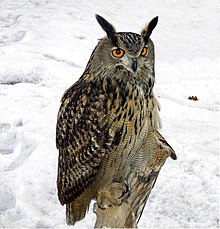Heguri no Tsuku (平群 木菟) (fl. 2nd to 5th c. C.E.?} was a diplomat and powerful figure (gōzoku) in ancient Japan. He was the founder of the Heguri clan. He is recorded in Japan's earliest literary texts, the Kojiki (712) and the Nihon Shoki (720). He bore the title Sukune and was also known as Heguri no Tsuku no Sukune, or simply Tsuku no Sukune.
Life

According to Nihon Shoki, Tsuku no Sukune was born the son of Takenouchi no Sukune. He is said to have been born on the same day as Emperor Ōjin's son Ōsazaki (later Emperor Nintoku). When the two were born, an eagle owl (tsuku in Japanese) flew into the delivery room of Ōjin's son, and a wren (sazaki in Japanese) flew into the delivery room of Takenouchi no Sukune's son. The two fathers exchanged the names of these birds, and thus Takenouchi no Sukune's son was named Tsuku and Ōjin's son was named Ōsazaki.
However, there are earlier records of him. In the third year of Ōjin's reign, he went to Baekje with Ki no Tsuno, Hata no Yashiro, and Soga no Ishikawa to condemn Jinsa of Baekje of being disrespectful to the Japanese emperor. In response to this, Jinsa was executed by Baekje as an apology. Tsuku and the others put Asin of Baekje in power and returned to Japan.
In the 8th month of the 16th year of Ojin's reign, when Kazuragi no Sotsuhiko did not return from Korea for a long time, the emperor concluded that Silla was preventing him from leaving and sent Tsuku and Ikuha no Toda no Sukune with their elite troops to Silla. When Tsuku and his army arrived at the border of Silla, the king of Silla was so shocked that he submitted to the crime and came to Japan with Sotsuhiko and the people of Yuzuki no Kimi (a Korean immigrant clan).
Tsuku was active as a diplomat, and was often sent to Baekje and the Gaya confederacy in Korea on diplomatic missions. According to Nihon Shoki, he was active as a diplomat during the 5th century and also retained diplomatic relations to Silla.
He helped Emperor Richū to succeed the throne after the death of Emperor Nintoku during a power struggle for succession. Richū's younger brother Suminoe no Nakatsumiko rebelled against the Crown Prince, Richū. Tsuku, Mononobe no Ōmae, and Achi no omi informed Richū about the rebellion, but he did not believe them. In response, the three put Richū on a horse and fled. After this, they suppressed the rebellion of Prince Naka (Nakatsumiko) according to the orders of Mitsuhawake no Sumeramikoto (later Emperor Hanzei). However, a former supporter of Prince Naka, a Hayato named Sashihire (Sobakari), killed Prince Naka. Tsuku and the others killed Sashihire in return and commented, "For us this is a great achievement, but for the Emperor this is merciless."
See also
References
- ^ Ueda, Masaaki (2002). Kōdansha Nihon jinmei daijiten. 上田正昭, Kōdansha. Shuppan Kenkyūjo, 講談社. 出版研究所. Kōdansha. 平群木菟. ISBN 4-06-210800-3. OCLC 50718841.
- ^ Sakamoto, Taro (2010). Nihon kodai shizoku jinmei jiten. Kunio Hirano. Yoshikawakobunkan. 平群木菟宿禰. ISBN 978-4-642-01458-8. OCLC 743364863.
- ^ Sekai daihyakka jiten. 日立デジタル平凡社. 1998. 平群木菟. ISBN 4-582-04002-0. OCLC 959677144.